






Kingston will be increasingly recognised as a place where business flourishes; where investment is welcome and serves all parts of the borough; where all residents and businesses can benefit from good growth, and where a green economy is at the heart of our actions.
We’ll achieve this by working closely with and enabling action from partners and stakeholders, being ready for change in a fast-changing world and ensuring that no residents are excluded from the opportunities the future brings.

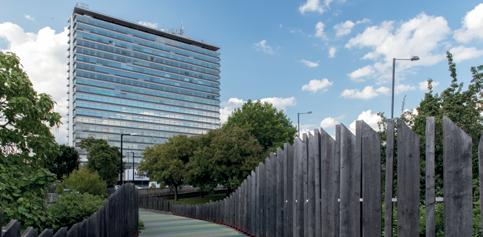

Foreword


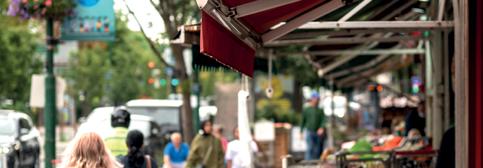


Confident in Kingston - a thriving borough where everyone can succeed in a changing world.
Residents and businesses in Kingston know what a great place it is - from its natural environment to its heritage, culture, distinct neighbourhoods and town centres, great schools, university and colleges. These are things that help to keep the borough close to the top of national and London rankings. In 2023 the borough was ranked London’s best borough to work and live, and in 2024 Kingston Town Centre ranked fifth in a national ‘vitality’ index 2 .
Yet there is no room for complacency. Everyone is aware of the changing economic, social and environmental forces that impact our lives and livelihoods and nowhere is immune from the challenges these bring. As the evidence behind this strategy shows, there are aspects of the borough and its economy that could deliver more for local people and businesses, presenting challenges and opportunities for us to address.
The economy is driven by global and national forces, but our choices can help to shape how these affect us and our communities. The council and its partners have much to offer here - from providing information and guidance, to providing direct support - especially for those whose choices are more restricted or those that may find it harder to benefit from economic opportunities.
While this is an ‘economic’ strategy, it is important for us to recognise that the economy should work for people and their communities. Growth of the economy relates closely to the personal growth that people can experience, through their sense of place, incomes, skills or wellbeing - this is at the heart of our strategy.
This strategy is not a starting point - it is closely aligned to and supports our Council Plan. It builds on the previous 2018-2025 economic strategy and the spatial policies within our emerging Local Plan, articulating our economic ambitions for the places that we create. The council and our partners already deliver a vast range of support and services that help shape and support the local economy. In presenting this new strategy we’re setting out how we will build on this, responding to new challenges, and aim for an even better, greener and fairer borough, together.
Being ‘Confident in Kingston’ is therefore a statement of intent to drive the borough forward with conviction, harnessing the borough’s collective talent, ambition and innovation to deliver on its potential.

We look forward to working with you to achieve this.
Councillor Alison Holt
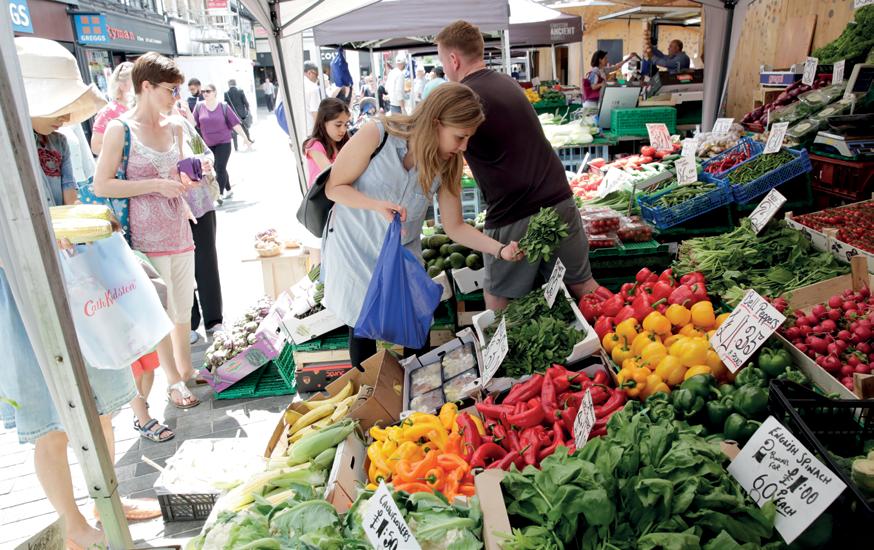
Traditionally, the value and performance of an economy is measured by what and how much it produces. A more inclusive economic strategy can instead view the economy in broader terms, including how secure, resilient, and prosperous its residents, workers, and businesses are; how attractive its places are to visit, or how well it operates within ecological limits.
Since our last economic strategy, Kingston’s economy and its wider context have experienced significant changes. This strategy provides the opportunity to take stock of these changes and consider where the council and its partners can best respond. We must recognise the context of constrained financial resources but should also seek to harness the extensive creativity which exists within the borough and leverage the opportunities arising from both our existing strengths and those that we can see developing in the future. This strategy will ensure that our borough is ready to succeed in a changing world.
The business, leisure and cultural activities which take place in Kingston Town Centre may be most prominent but there is economic activity and opportunity in all of our communities. Throughout this strategy we refer to the borough as ‘Kingston’, but use ‘Kingston Town Centre’ when we mean the town specifically.

A core purpose of our economic strategy is to shape and inform the actions needed to grow and support the local economy. A wide range of council services have a core role in this, bringing considerable potential for impact, but we can only achieve the best for Kingston’s businesses and residents by recognising shared interests and acting on these. This means seeking and inviting collaboration with local institutions and organisations, businesses, investors, developers and of course the communities we serve.
Close working with the The Ministry of Housing, Communities and Local Government and the Greater London Authority will be increasingly important for Kingston as their priorities are solidified, and the continued excellent work of local partners will be vital in supporting a thriving local economy. We share strategic objectives with many of our partners - including Kingston First Business Improvement District, Kingston Chamber of Commerce, our colleges, university and large employers - and this strategy aims to support delivery of these mutual
interests together. All of these partners have helped to shape the outcomes within this strategy and will be key partners in the development and delivery of the actions which will follow.
We recognise that increasingly our success will be dependent on working effectively with our neighbouring boroughs to ensure that growth across South London benefits all residents. We will continue to work closely with the South London Partnership and seek to strengthen our collaboration with the Greater London Authority and the Government to help shape and deliver on our shared priorities and help to ensure that Kingston’s opportunities and asks feature within the emerging London Growth Plan.
Because of this, collaboration is not only one of the five core outcomes framing this strategy that define what we’ll deliver, but also a key feature of how we will do that.
The challenges and opportunities that this strategy identifies have emerged from extensive analysis, along with wide-ranging research in late 2023 and early 2024.
The quantitative research used data from trusted sources like the Office for National Statistics, Department for Education, Consumer Data Research Centre, and DLUHC to understand socioeconomic change across the borough over the last 10 or so years.
Qualitative research included engagement with local businesses, partners, residents and council officers to learn about their own experiences of and ambitions for the economy. This was complemented by engagement with key forums, including the Kingston Large Employers Forum, Kingston Partnership and councillors.
Sections of this strategy draw conclusions from this evidence base or present this in summary form. The quantitative and qualitative evidence reports are available separately to this document.


Kingston will be increasingly recognised as a place where business flourishes; where investment is welcome and serves all parts of the borough; where all residents and businesses can benefit from good growth; and where a green economy is at the heart of our actions.
“Confident in Kingston, a thriving borough where everyone can succeed in a changing world”.
We’ll achieve this by working closely with and enabling action from partners and stakeholders, being ready for change in a fast-changing world and ensuring that no residents are excluded from the opportunities the future brings.
Our borough has a rich history of industry and innovation, from the pioneering work on photography in the 1830s by Eadward Muybridge, to the manufacture and design of planes at the Hawker factory from 1912. The 1960s saw the development of Mary Quant’s famous cosmetics brand on a Chessington industrial estate and the design of the Mini Cooper in Surbiton. More recently, the innovative design of Kingston University’s Town House won the Stirling prize in 2021 and Kingston School of Art is London’s highest ranking for art and design.
Recent years have been challenging for local economies across the country and the next few years appear uncertain - but that doesn’t mean we shouldn’t strive to build on this success. A ‘wait and see’ approach to the economy will not
get Kingston the investment or recognition it is capable of attracting. The council and its partners need to be ready for and positively respond to change, such as adapting to new ways of working from the pandemic, responding to cost of living challenges, and the urgent need to decarbonise the economy. Our town centres and business parks are key parts of the picture and, alongside the benefits of sustaining strong cultural and creative sectors, will have key roles in defining the borough’s economy and quality of life - supporting place-shaping in its fullest sense.
At the same time, the borough is sometimes perceived as a leafy suburb, perhaps outside of London - and perhaps not the first place to visit or invest in. This is rebutted by recent major investment by Lidl and Unilever in new





headquarters; the growth of major cultural events; the borough’s hosting of a top-ranking university; London’s largest theme park and one of London’s top shopping destinations in Kingston Town Centre. These examples start to demonstrate the principles of ‘polycentric’ city development, with more focus on mixed-use developments and creating neighbourhoods, placemaking, reducing the need to commute to a central location and enhancing connectivity within and between suburbs. They underline the need to be proactive in communicating why the borough is - and should increasingly be - a first-choice destination for business, study and leisure - contributing this perspective through our strategic partners to inform policy and investment to distribute growth and amenity throughout the capital.











These outcomes are expanded in later sections, setting out the rationale and actions we will undertake to achieve them.

Kingston will be recognised for its wealth of attributes to live, work, study and do business. Being forward-looking while respecting its heritage, the borough will be known as a first-choice location for investment, enterprise, and visitors - regionally, nationally and internationally.
Kingston will be a recognised leader in furthering a green economy and decarbonisation. Alongside the council’s own commitments, businesses, transport, building and activities that underpin our local economy will incorporate ‘green’ initiatives and behaviours that reduce carbon emissions and increase sustainability, with a strong focus on retrofitting of homes and business premises.


Our town centres and high streets will be welcoming and accessible for people of all ages, hosting more diverse businesses, social, leisure and cultural amenities, essential services, and housing options that enhance their strengths and unique characteristics for community benefit. Our borough will have the quality office, light industrial, and creative spaces for businesses to start and grow, including those needed to support the green economy.

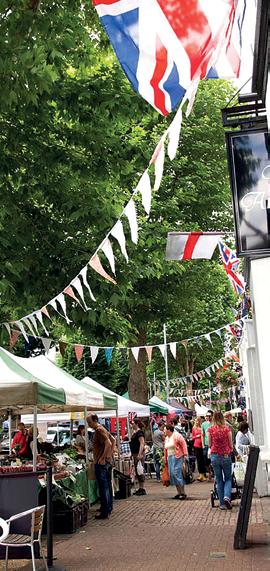
A fairer economy
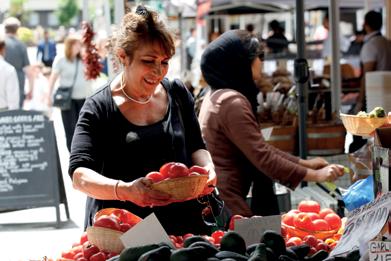
Everyone will be able to access quality education, training, jobs, employment space, and housing, especially those facing greater barriers to access, with fairness and inclusion firmly embedded across our economy.
A place of active, productive collaboration
We will have strong collaboration involving the partners and stakeholders that help to define our borough, alongside effective collaboration between council services. Building on our solid foundation, our partnerships will be agile, productive, and support our shared interests so we can act on opportunities, deploy resources and direct investment more effectively to secure greater local benefit.
£43,832
London's borough to work jobs
20,853 65% 37.8%
7,000 students in Kington College (3000 full-time) population 168,063 (2021)
20,000 84.1%
1275 new emerge in the year, on median gross yearly salary of a Kingston resident
The Royal Borough of 77,000 Health and Retail and Top 3 sectors by of residents are economically active of residents held NVQ4+ quali cations in 2023 estimated Korean population in and around New Malden, making it Europe's largest Korean community
Ranked large town students at Kingston University from 140+ countries of resident are in professional occupations
Over £1 of investment in major development the last
London's best borough (in 2023) work and live
Ranked No. 1 retail centre
£1 billion in the borough’s development sites over 6-8 years
Social care, and Education by employment
new businesses the borough each on average
1200
‘green’ jobs needed by 2030
45,000
Served by out-commuters
10
train stations
43,000 sq m by 2050 1800 and and
36,000 commuting in, daily (pre-2020)
8,600 of additional o ce space needed to meet future demands visitors to Chessington World of Adventures annually
active enterprises
1.5 million
This all takes place in the context of connections - of transport, information, knowledge and data - alongside interaction with the economies of neighbouring boroughs, regions and beyond, all of which can enable or constrain how well the local economy works.
Our local economy includes the goods and services produced, purchased or used, as well as the buildings and infrastructure that support this. It isn’t abstract though - it is based on how people live their lives day-to-day, their choices on where to shop, eat, play, study and work being key components of the borough’s economic resilience - and many residents also run businesses. The constant inflow and outflow of visitors, students and workers that bring their energy, creativity and spending-power also help to define the borough.
A significant proportion of economic activity is centred on the borough’s four designated town centres but this is only part of the picture, with two strategic industrial locations and eight industrial areas of local significance. Very many businesses are also home-based, bringing economic activity to every street and corner of the borough.


The following sections draw on our full evidence base which complements and informs this strategy.
Kingston upon Thames is one of London’s smaller boroughs in terms of population, home to around 168,000 residents as of 2021. It hosts around 8,600 businesses - not including those that sit below the VAT and PAYE thresholds - and 77,000 jobs. Businesses starting up in Kingston have some of London’s highest survival rates for the one, three and five-year milestones.
The largest sectors include health and social care (18%), retail (17%), and education (12%). Recent years have seen growth in several sectors, particularly in health and social care, food and beverage industries (e.g. pubs, restaurants, catering) and management consulting.

Many of Kingston’s businesses are very engaged in the borough’s future and participate in employer and business networks led by the council, Kingston First BID, the Chamber of Commerce and others.
Large employers include NHS, Kingston University, Chessington World of Adventures, South Thames College Group, and the headquarters of Unilever, Lidl, Oliver Bonas and Kingston Council.

The borough provides around 558,000 sqm of employment floorspace and demand is strong for industrial space in particular, as it is across London. Office and workspace options are distributed around the borough and most town centres have at least one flexible workspace although Grade A office spaces are in short supply. A projected growth of 67,000 sqm of additional space is required to meet needs up to 2041, including 16,300 sqm of industrial and 42,750sqm of office space to meet demand or replace ageing stock.
Kingston Town Centre is a major metropolitan centre and one of London’s largest and most important retail areas; New Malden, at the heart of Europe’s largest Korean community; Surbiton with its fast mainline rail connections and independent businesses; and Tolworth with its distinctive high street and significant local
growth. Locations to the south of the borough including Chessington and Hook are served by smaller retail and commercial spaces but host the borough’s two strategic industrial locations hosting around 135 businesses between them - these are complemented by eight locally significant industrial areas across the borough.
Many orbital bus routes including the new Superloop service support commuters and visitors, alongside ten rail stations, an extensive cycling network, and an enviable position between Heathrow and Gatwick. Most of the borough benefits from high quality broadband access, although its infrastructure requires modernisation, and service improvement in Kingston Town Centre.


Kingston experienced modest population growth of 5% between 2011 and 2021 compared to 7.7% across London. The borough hosts a diverse community with strong connections to other countries through this, including major Korean and Tamil populations, as well as those from Hong Kong and Ukraine.
Residents are highly educated, with two-thirds holding NVQ level 4 or above and 60% working in professional, managerial, and technical roles, leading to one of the country’s highest median incomes in the country and relatively low unemployment and economic inactivity rates. Nonetheless, high living costs and lower incomes impact a significant proportion of residents and some remain at risk of fuel poverty and health deprivation.
As with the rest of the country, Kingston’s population
is ageing, with the 50+ pre- and post-retirement age groups set to grow by 30% by 2040.
Like other outer London boroughs, many residents in Kingston work for employers based in central London. With many of these working in home-working friendly roles many may be commuting significantly less. Yet many of the boroughs jobs require in-person attendance, such as in retail, education and care - often filled by workers drawn from a 10km radius of the borough, alongside resident workers.
Our key sectors are those where we anticipate that growth can or should take place, and be supported to bring economic benefits in terms of jobs and enhanced livelihoods, and where the success of these sectors supports delivery of our five outcomes.
For our strategy, we have taken a blended approach to defining these sectors, drawing on the strategy’s evidence base and aiming to build on our strengths; considering where there is evidence of growth and where there is a realistic opportunity to have impact in the lifetime of this strategy. Our key sectors are also informed by the well-evidenced Annex of the London Local Skills Improvement Plan prepared by South London Partnership.
While we may support growth in any sector depending on the needs and opportunities of the moment, identifying our priority sectors will help bring focus to our work.
Our Action Plan incorporates a range of activities that directly and indirectly support these sectors, through both practical day-to-day support, and longer-term policy interventions.
Sector

Target action

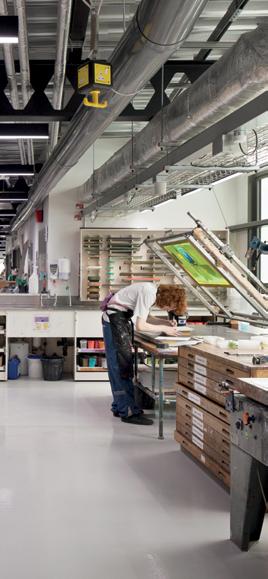

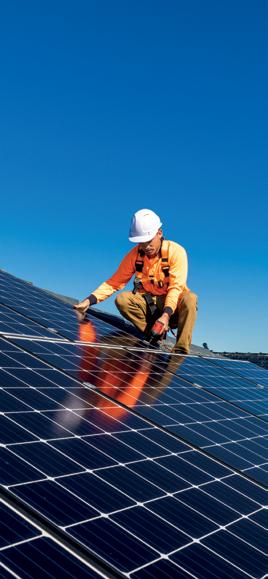
Health and social care Green economy and retrofit Arts, culture and creative industries
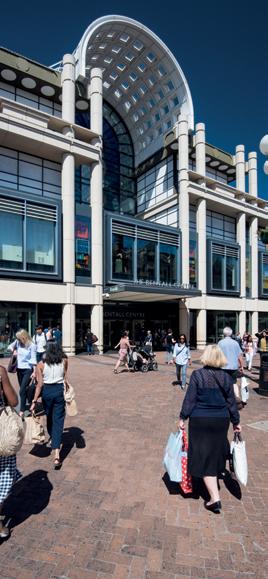
retail and the visitor economy

Professional, scientific and technical activities
Boosting workforce and skills development.
Generating awareness of what is available; catalysing participation and providing for places and spaces for this to take place; developing and retaining the talent pipeline.
Stimulating the supply of and demand for retrofit services, developing the skills pipeline for construction and supporting the development of a cluster of retrofit related businesses.
Stimulate labour supply through London Living
Wage, early careers and work readiness support, develop cultural offer and boost tourism to drive demand.
Supporting provision of appropriate and affordable employment space, knowledge exchange activity, networking and business support.
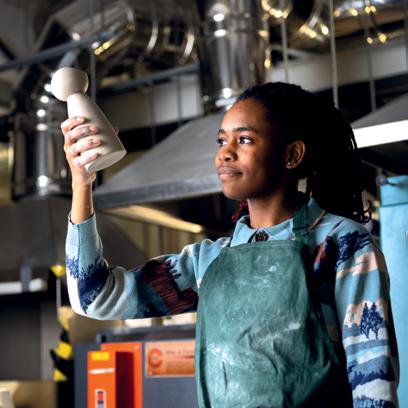

Our strategy recognises how the approach to local economic development has evolved in recent years. It acknowledges the interplay between traditional factors such as job creation, productivity, infrastructure needs and deprivation measures, but takes account of the role of emerging technologies, knowledgebased sectors, entrepreneurship, quality of life and culture.
Increasingly complex economic factors also mean more interdependent places and stakeholders. Delivering on this therefore needs a much wider range of services, partners and stakeholders. This can include council teams such as regeneration, economic development,
public health, regulatory services, transport, planning policy, social care, housing, education and more - as well as external organisations like national and regional government, the NHS, TfL, local businesses, higher and further education providers and the DWP.
While this presents a delivery challenge, it provides the key opportunity of collaboration - increasingly pertinent in the context of constrained public sector resources. It also underlines the benefits of acting together to inform - and ultimately deliver on - regional and national frameworks that shape local delivery contexts - such as the successor to the previous industrial strategy, and the London Growth Plan.


Council takes a hands-on leadership role. Direct or commissioned delivery, applying or securing resources financing this.

Council works in partnership with others or brokers relationships to enable delivery. Application of powers, tools and influence to create the conditions for delivery.

Council promotes opportunities for others to deliver, potentially in collaboration with other stakeholders. Lobbying or campaigning for change, resourcing or delivery by other bodies (including central and regional government).
The Council, its partners and communities bring a broad range of tools to help deliver this strategy.
As this strategy’s action plan evolves, we will consider the most appropriate form of delivery and leadership for the desired outcomes - ranging from direct intervention, to a supportive and enabling approach, to advocating and lobbying.
The council’s own toolkit includes, for example:
• Planning processes and planning policies to encourage and guide good development that will support successful, inclusive places.
• Accessing or applying funding to deliver specific interventions.
• Smart application of statutory powers including regulatory services and business rates.
• Using council property assets to support the business environment, community organisations, culture and heritage activities and other socially beneficial activities.
• Using procurement and supply chain powers to support Kingston businesses.
• Developing clear strategies across its services that provide for broad community leadership that partners and others can draw on or align with.
• Providing or adapting services to support residents and businesses to thrive.
• Building the ‘soft infrastructure’ of partnerships and relationships to enable collaboration and two-way dialogue on challenges and opportunities.
• Maximising its powerful range of communication and engagement channels.
• A growing focus on ‘prevention’ - so that problems are addressed early and costs avoided.


Partners share many of these tools, providing significant opportunities to enhance their impact through collaboration - such as procurement, use of assets and communication channels.
Key delivery partners include:
• The Ministry of Housing, Communities & Local Government - providing strategic context and direction through policy and resources.
• Greater London Authority - through policy, resources and co-delivery.

Our borough is fortunate to host a diverse range of influential and highly-engaged businesses and organisations that share an interest in the economic success of the borough, including:
• Kingston First Business Improvement District
• Kingston Chamber of Commerce
• Kingston University
• Kingston College
• Richmond and Hillcroft Adult and Community College
• JCP Kingston
• Rose Theatre, Kingston
• South London Partnership
• Well-known commercial-sector employers including Unilever, Lidl, Chessington World of Adventures
• Wolters Kluwer
• Kingston Hospital NHS Foundation Trust
• Hilton Doubletree
• John Lewis
• Voluntary and Community Sector organisations
South London Partnership supports the collaboration of the five boroughs of Kingston upon Thames, Merton, Sutton, Richmond upon Thames and Croydon. Its work focuses on issues where working together can add value to what individual boroughs could achieve on their own, including a strong focus on the subregion’s economy. In partnership with boroughs it is delivering joint programmes worth £25 million.
Partners also bring a vast range of tools that can support our shared interests, including insight, expertise, challenge, representation and perspectives of a breadth of communities and stakeholders. Our Outcome
5 - “A place of active, productive collaboration” expresses our intent to nurture our partnerships and relationships to deliver this strategy, and an invitation to partners to contribute.
Partners have built a strong foundation for this collaboration through a wealth of partnerships and forums that can help facilitate delivery of our strategy, including:
• Kingston Partnership Board
• Kingston Large Employers’ Forum
• Kingston Employment and Skills Partnership
• Kingston First Board
• Kingston Green Business Community
• New Malden Town Centre Partnership
• South London Partnership and its Skills and Employment Alliance
• Voluntary and Community Sector Partnership (including Empowering People, Supporting Communities and Inclusive Kingston)
Where collaborations don’t currently exist we will aim to bring forward new partnerships in more places and on more themes, where these have support and will add value.
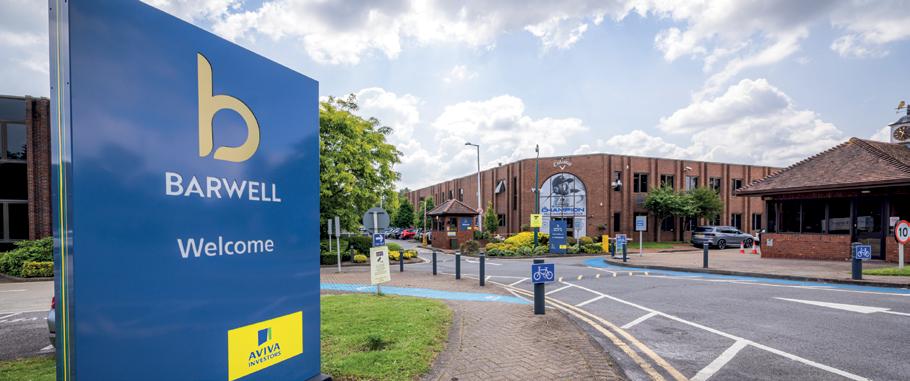

This strategy can’t and shouldn’t try to do everything - it requires focus. These principles for action help to determine what will be included in this strategy’s action plan.
Despite the context of constrained resources, there is ample room for ambition and creativity. This will mean considering the extent of what could be delivered and prioritising effectively and applying the full range of mechanisms at our disposal - in the most appropriate and beneficial ways.
The following principles for action will inform the inclusion of activity in this strategy’s action plan:
The potential action or intervention is within the control or influence of the council and/or its partners.
Consideration of whether the proposed actions are:
Where these principles are met, actions would:
• Implement or develop existing programmes and initiatives by:
Ĕ Doing more of what is working
Ĕ Doing things differently
Ĕ Doing things better
• Suitable: Is the action likely to bring the desired impact on the issue or people it is intended to address?
• Acceptable: Does the action fit with key stakeholders’ expectations, providing an appropriate balance of risk and benefit?
• Feasible: Are the resources, skills and capacity and time available to deliver the action?
• Or, bring forward new programmes or initiatives, only where:
Ĕ Resources are available or can be accessed, AND
Ĕ The need is clear and delivers against the strategy’s priorities

Our evidence base and our engagement with stakeholders and partners has helped to define a set of headline outcomes that we aim to achieve through this strategy. These outcomes, and the actions that follow, respond to our Council Plan priorities while reflecting the principles for inclusion set out above. They are representative of a more detailed ’live’ action plan which will evolve as new opportunities and needs arise - as actions are completed, further actions to deliver the outcome may be added.
Each section below provides a short summary of key points from the evidence base that underpins the outcome. The full evidence base, and consultation and engagement report, are available separately.
Metrics including Performance measures and milestones for each action will be developed alongside the delivery planning for each action taking account of its context. Strategy monitoring and reporting will incorporate these metrics where appropriate.


Kingston maintains its historical character while being the borough’s largest business location. Granted a Royal Charter as a market town, Kingston’s Ancient Market and its Grade II* listed Market House remains central to its identity. Regularly ranked as one of the country’s best and most resilient retail centres it is home to Kingston First, the country’s first Business Improvement District. Today, the town centre is an academic and creative hub, featuring Kingston University and its Stirling Prize winning Town House and Kingston School of Arts, the Rose Theatre, a Grade II listed library and museum. Recent development has seen new workspace and creative space on the riverside, enhancement of key public spaces and the emergence of Unilever’s new HQ, with a pipeline of major sites that will further boost the town’s local and regional role.
New Malden is one of London’s most diverse yet least known neighbourhoods. It was established in the 1840s following the arrival of the railways. The town hosts significant businesses including BAE Systems and Northrop Grumman, and had previously hosted Samsung’s UK offices - a factor in New Malden’s emergence as one of Europe’s most significant Asian hubs. Alongside significant Tamil and Sri Lankan communities, New Malden is now the centre of the largest Korean community in Europe - the town’s history and its cultural distinctiveness being reflected in its vibrant high street which hosts over 20 Korean and cafes.
Tolworth is listed in the Domesday Book the town is centred around Tolworth Broadway and hosts the iconic Tolworth Tower, with design features echoing the arterial A3 route alongside. The Broadway hosts an eclectic range of shops and eateries reflecting the town’s diverse communities, including Italian, Albanian, and Tamil. The nearby site of the Toby Jug pub holds a place in history as the location where David Bowie launched his Ziggy Stardust stage show in 1972. Lidl’s new GB head office and major residential developments are helping to define and strengthen the town’s future profile, alongside enhancement of the area’s green spaces, including King George’s Playing Fields and Tolworth Court Farm fields.

Surbiton is famous as the quintessential suburban neighbourhood, growing significantly following the railway’s arrival in 1838. The town centre host’s its iconic Art Deco station - which benefits from fast mainline trainlines - and a strong independent retail and hospitality sector. Hollyfield Road hosts the site of the John Cooper garage, responsible for the design of the Monte Carlo Rally-winning Mini Cooper. Surbiton’s identity is increasingly built on a strong community led creative scene, quirky seasonal events including Surbiton Ski Sunday and Sardine Festival led by local charity Community Brain. Maple Road hosts an annual food festival and regular farmers markets.
Hook parade and North Parade provide the area’s local shops and services and community hubs - their modesty belying the area’s cultural and economic importance. Two strategic industrial estates frame the area, alongside Chessington World of Adventures - one of the UK’s largest theme parks, attracting 1.5m visitors each year. Nonetheless, the area retains its largely residential and ‘green belt’ character, part of which includes Barwell Court Farm which hosted and housed pop icons from Bob Geldof to Genesis and Simple Minds in the 1970s and 1980s.
Barwell Business Park in Chessington is one of the borough’s strategic Industrial locations, benefitting from easy access to the M25 and A3. The site provides 400,000 square feet of employment space, flexible industrial, logistics, and office spaces that hosts around 450 employees across 60 businesses. Barwell Business Park supports a diverse range of industries, including distribution and logistics, services and manufacturing amongst others and enjoys high occupancy rates reflecting its appeal to tenants.
The other strategic industrial location in the borough is Chessington Industrial Estate. The estate has been home to more that 100 different businesses during an illustrious 90 year history, including the development of Mary Quant Cosmetics, the Brabham Formula 1 Team and Donald Campbell’s Bluebird K7. The site today provides employment in engineering, food retail, IT, jewellers and more. Organic redevelopment and enhancement of existing stock by landowners demonstrates the location’s investment appeal and future prospects. The site also hosts an increasingly connected community of businesses and activity, with an eye on the future including exploring opportunities for the circular economy.
1. St Johns Industrial Area
2. Cambridge Road and Hampden Road
3. Silverglade Business Park
4. Red Lion Road
5. Fairfield Trade Park
6. Canbury Park
7. London Road
8. St George Industrial Estate

opportunities
Kingston will be recognised for its wealth of attributes to live, work, study and do business. Being forward-looking while respecting its heritage, the borough will be known as a first-choice location for investment, enterprise, and visitors - regionally, nationally and internationally.

The borough’s profile does not yet reflect the benefits of its riverside location, connectivity, attractions and unique town centres and its history of innovation and invention is largely unrecognised. This underplays Kingston’s appeal to visitors, potential workers, students, residents and business investors. In addition, its distinct and diverse communities provide a platform to explore the potential for international inward investment and, given its assets, Kingston’s visitor economy has significant headroom for growth.
Kingston University is consistently amongst the highest ranked universities for graduate start-ups but the borough struggles to retain and capitalise on them. Similarly, while Kingston businesses enjoy strong ‘survival rates’, the growth rate of the business base as a whole lags behind that of some comparable boroughs and London - with access to suitable grow-on space presenting a challenge.
programmes, new workspaces, and a thriving Chamber of Commerce.
Kingston’s housing stock is among the country’s most expensive and does not provide the range of tenures, housing types and price levels suitable for all, particularly for younger people and the university’s graduates. At the same time, investment in high quality, flexible, modern workspace is needed to reduce growth constraints. Council and partner-owned assets can play a major role in addressing these challenges through well-designed mixed use schemes, repurposing and improving existing stock and heritage assets.
>£1bn
Estimated investment in the borough over the last 8 years
Prospective business-owners may lack the confidence or knowledge to take the first steps and often struggle to find the right information to guide them. The borough has a good ecosystem of support including the university’s innovation, research and development expertise, access to the BIG South London innovation and support
The availability of the right kind of space, at the right price, in the right place with appealing tenures is a constraint on growth and a barrier for some start-ups. The piecemeal erosion of employment space, often lost to residential development, presents a risk to the borough’s economy unless it is replaced with quality, flexible space to meet diverse needs. Longer term policy and shorter term interventions can be applied, including consideration of the council’s own estate, to meet the likely shortfall of 67,000sqm of employment floorspace needed to meet needs up to 2041.
Despite some good transport connections and a new strategic cycle route network, some parts of the borough are less well-served by rail or bus than others, constraining potential for growth. There is significant scope to enhance rail connectivity across Kingston both in terms of speed and regularity of service to and through the borough including through a potential Crossrail 2 and ‘metroisation’ of suburban services. Similarly, while much of the borough enjoys high quality broadband, much of this is based on outdated infrastructure that can limit business activities and Kingston town centre is amongst places least-well provided for.
1. Enhance the borough’s profile and challenge perceptions so that these better reflect our ambition and attributes
• Enhance the borough’s approach to inward investment - locally, nationally and internationally - including clear information about the borough’s attributes, strong and consistent messaging, openness to development, and enhanced processes for engaging with potential investors and agencies to support this.
• Build the borough’s profile and enhance its image drawing on its history of innovation, to support investment, recruitment, tourism and businesses.
2. Raise the profile of culture and the arts, building on the borough’s rich history of innovation and enterprise
3. Address structural issues that present barriers to progress and growth
• Make the case for improvements in strategic transport connectivity to support Kingston and South London’s future development, working closely with our South London Partnership partners to engage London and governmental decision-makers.
• Encourage increased investment in fibre-optic broadband technology in the borough with a key focus on Kingston Town Centre.
• Deliver new homes through through development sites, our small sites programme and Cambridge Road Estate, including a range of tenures to meet diverse needs including affordable homes, social housing, build-to-rent housing and homes suitable for families (Also in Outcome 4 - Fairer Economy).
• Enhanced profile amongst partners, investors, visitors.
• Significant investments secured for major site(s).
• Increased leisure and tourism visitor numbers.
• Develop the role of arts, culture, creativity, and heritage in the borough economy through major programmes as catalysts for participation and awareness including Kingston 2025, and a new cultural strategy.
• Develop our approach to increasing engagement in the visitor economy / tourism, including understanding of potential markets and delivery options.
• Support business to develop and access the workforce required to enhance productivity and growth, including through construction and retrofit skills, health and social care, and responding to opportunities presented by artificial intelligence.
• Implement programmes to support business innovation, start-up and growth, including practical support, advice and information through collaboration with business, educators and community partners.
• Promote access to affordable and flexible workspace through policies to support its provision, and direct support to bring forward new spaces when resources allow.
The council has led the way through its Climate Action Plan, its Net Zero 2030 Strategy and its work to build business and partner engagement in these. The Chamber of Commerce, college and university, along with commercial sector partners have started to demonstrate what can be achieved collaboratively, providing a foundation for the borough to emerge as a leader in decarbonation and retrofit activity.
While awareness of the climate challenge is generally very high, many people and businesses are not sure where to start in addressing this, or face actual or perceived cost or technical barriers to doing so.
Kingston will be a recognised leader in furthering a green economy and decarbonisation. Alongside the council’s own commitments, businesses, transport, building and activities that underpin our local economy will incorporate ‘green’ initiatives and behaviours that reduce carbon emissions and increase sustainability, with a strong focus on retrofitting of homes and business premises.
Kingston needs significant growth in the number of green and low-carbon jobs if it is to meet emerging needs including in low-carbon heat and energy efficiency. South London Partnership’s research projects a 3-fold increase in green jobs across the sub-region by 2050, with over 60% of these being higher-level managerial professional roles well-suited to many in Kingston’s resident population.
Energy efficiency standards
Almost half of Kingston’s commercial property could become unlettable by 2027 if they do not meet Energy Performance Certificate C rating, if these new regulations are enacted. A key challenge is the financing of retrofit at both local authority and individual business levels.
South London Partnership, its individual boroughs and universities have developed considerable intelligence and expertise in the green economy. This includes research, development of the Green Skills Academy, innovation support and knowledge exchange activity. Key features of the green economy operate across multiple boroughs presenting an opportunity to enhance collaboration to maximise skills development, innovation and transition into green jobs.
Consumer behaviour has changed rapidly, accelerated by the pandemic, with many people now preferring home-delivery options for everyday goods - adding to congestion, emissions and noise. Online retailers and delivery firms increasingly seek ‘last mile’ facilities to enable this. Collaboration between transport operators, the Council and TfL can deliver travel opportunities to reduce reliance on private cars, support consolidation of freight to reduce vehicles and journeys, and develop more sustainable delivery options.
74%
Of business properties potentially impacted by changing EPC regulations, by 2030

65,000
Projected green jobs in south London by 2050, compared to 19,000 in 2020
1. Develop Kingston’s role as a leader in climate action
• Share our progress and expertise in developing the green economy, to inspire change and support the work of local partners, regional and national networks.
• Support and inform South London Partnership’s climate-focussed work, raising its profile as a location of excellence and climate collaboration.
3. Boost business decarbonisation
• Generate business interest and engagement in environmental impacts and the circular economy, including through forums, events, business opportunities, environmental audits and targeted initiatives including on transport and waste.
• Explore options to apply fiscal measures to incentivise investment or support targeted reduction of negative environmental impacts of businesses.
• Explore opportunities to install local consolidated delivery lockers, to reduce delivery journeys.
2. Develop the market for retrofit services and the circular economy
• Stimulate the supply of and demand for retrofit services through information, events and supply chain opportunities including the council’s housing providers, contracts and developments.
• Support the development and take-up of green skills pathways through collaboration on subregional programmes and with local providers.
Our measures of success:
• Reduction in direct business carbon emissions.
• Increase in green jobs across the subregion by 2028.
• Increased profile gained for the borough’s work.
4. Innovate through piloting and partnerships - learning from the best and by doing
• Support eco-innovation amongst businesses through knowledge exchange, partnerships and funding advice, working with Kingston University, BIG South London and others.
• Work with housing providers, including the council’s own services and providers to explore supply chain opportunities for local retrofit providers.
Our town centres and high streets will be welcoming and accessible for people of all ages, hosting more diverse businesses, social, leisure and cultural amenities, essential services, and housing options that enhance their strengths and unique characteristics for community benefit. Our borough will have the quality office, light industrial, and creative spaces for businesses to start and grow, including those needed to support the green economy.
A projected 67,000sqm of new employment floorspace is required by 2041, much of which would be directed towards town centres, particularly Kingston and Surbiton. Some sectors may experience constraints on growth and innovation due to low availability of the type and quality of space that occupiers now seek. Yet some types of commercial spaces are experiencing increased vacancy rates and may be offered on terms that do not provide the flexibility or quality that occupiers seek. Crucially, much of Kingston’s commercial stock requires retrofitting to meet emerging efficiency standards, exacerbating the supply challenges, with implications for rents.
Our town centres will benefit from a broader range and higher quality provision of commercial spaces that meet growth and future employment needs, including office space. However, some high streets have become less diverse, partly in response to changes in national planning policy. Depending on the nature of the centre and its location, diversification could also include leisure, evening and night-time activities, restaurants, social and community spaces, and homes where this is appropriate. Incorporating space for culture
and arts would help differentiate places, act as a catalyst for community engagement and add appeal to potential visitors.
While Kingston town centre is pivotal for the borough’s economy, the borough’s other town centres present unique character and opportunities while providing important complementary roles. New Malden, Surbition, Tolworth and Chessington/Hook face similar challenges to varying levels and need to evolve, building on their distinctive characteristics, to ensure continued success.
Despite the growth of online services, our town and business centres, and smaller parades, remain essential sources of amenities for the communities they serve, such as fresh food, social spaces, childcare options, health services, and leisure. Maintaining this range of provision and designing in accessibility can help ensure that people are not excluded due to health, income, or mobility challenges.
1,275
New businesses ‘born’ in the borough each year on average
Despite their critical role in supplying goods and services for local people and businesses, industrial estates are under pressure for housing in Kingston and across London. Vacancy rates are low and demand is high for many types of uses, from logistics to small-scale maker space. While this has prompted organic modernisation and replacement of outdated stock this is not the case across all sites. There is an opportunity to support and drive positive development more widely, addressing challenges of fragmented ownership and the risk of piecemeal erosion that can undermine a site’s viability as a whole.
Our recent Employment Land Review identified a likely shortfall of 16,300 sqm of industrial space to meet needs to 2041. Effective policy approaches and masterplanning can promote and attract more high-value, knowledge-driven industrial uses, potentially including modern methods of intensification and co-location between uses to meet competing needs - including residential. Actively enhancing the role of our industrial areas can also help drive the local economy by retaining and growing businesses and their supply chainshelping tour industrial locations to become hives of innovation - not least to meet the challenges of climate reduction and associated green and retrofit skills.
1. Strengthen the protection and provision of places and affordable spaces to work
• Deliver on the new Local Plan to reflect the outcomes of this strategy, including strengthening protection of commercial, employment, cultural and creative space and essential retail provision, including affordable space, while enabling flexibility and diversification where valuable.
• Enhance the focus on industrial areas within the new Local Plan, strengthening the protection of these locations to support their long-viability and vitality, and support their enhancement through consideration of intensification, co-location, and retrofit and masterplanning where appropriate.
2. Build direction through focussed plans for town and local centres
• Deliver focused plans for our town centres and high streets building on existing initiatives to shape regeneration and growth in Surbiton, New Malden, and Tolworth, Kingston, Chessington and Hook.
• Enhance our understanding of town centre and district centre needs through new retail needs assessment, to inform the borough’s Local Plan and more localised interventions, including through our application of regulatory and policy roles.
of a Night Time Strategy, incorporating safety and supporting diversification of activities.
• Create a better sense of arrival at the borough’s important railway station gateways into our town centre, by improving wayfinding, and building a stronger sense of place.
4. Enhance the presentation and role of the borough’s historic and significant spaces and places
• Revitalise Kingston Town Centre’s Ancient Marketplace to create a cultural and commercial destination that celebrates the area’s unique heritage and character.
• Continue the regeneration of Kingston riverside, supporting new business and creative enterprise activity, and develop a riverside strategy to enhance access and connectivity.
• Invest in enhanced public realm throughout our town centres and public spaces including Eagle Brewery wharf, Memorial Gardens, north Kingston riverside and Tolworth station gateway.
• Celebrate and enhance the distinctiveness of our local centres including the natural environment of Tolworth, the Korean heritage in New Malden and the rich industrial and enterprising heart of Chessington.
Our measures of success:
67,270 sq metres of new employment space needed to meet future needs
3. Improve the welcome and sense of safety across our town centres and high streets
• Improve the borough’s support for the evening and night time and evening economy through delivery
• Fewer empty units across our main town centres and high streets.
• Industrial and other employment space better protected through policy.
• More new businessess survive longer.
Although Kingston residents have relatively high median incomes by London and UK standards, rising costs have eaten into household budgets, particularly affecting those on lower incomes. A significant number of local people claim Universal Credit, including many that have a job. Alongside this, some businesses may be putting off investing or hiring given uncertainty around revenues and increasing costs.
Everyone will be able to access quality education, training, jobs, employment space, and housing, especially those facing greater barriers to access, with fairness and inclusion firmly embedded across our economy.
Property in Kingston is among the most expensive in the country and many people even on average salaries cannot afford to rent or buy, with this disproportionately impacting younger people. A lack of variety and quality of commercial spaces, alongside, inflexible leasing arrangements and often high rents, is likely to constrain growth and limit options for new businesses to come to or start up in Kingston.
The borough’s high employment and economic activity rates can mask the challenges faced by many to achieving economic success and its related benefits. This includes challenges or perceived barriers such as disability, age, gender, ethnicity, experience of being in care, being an exoffender, neurodiversity or lacking digital access or confidence. Distinct communities including our Hong Kong, Tamil and Korean residents may also have particular needs or barriers to participation. Joining up and enhancing existing services, and targeting new ones where appropriate can help to address this.
Median earnings for people working in Kingston are significantly lower than people living in Kingston. A gender pay gap is also evident for female residents, with median incomes significantly lower than those for males, particularly for those in full-time employment.
4,507
of Universal
The borough’s relative affluence can obscure the parts of the borough where residents are more significantly at risk of experiencing challenges. This includes concentrations of those experiencing fuel poverty, health deprivation and low income - factors that can reduce their capacity or desire to work, study, socialise or play an active part in their communities.
Skills and employment issues cross borough boundaries
South London boroughs share many challenges to varying levels. The Local Skills Improvement Plan identifies 5 key sectors for priority attention including retail, health and social care, construction, ICT and education. As this plan
evolveswith emerging government and Londonled approaches, south London’s boroughs should continue to play an important role. Ths includes supporting education providers’ activity, to address the needs of these sectors and associated skills such as work-readiness and digital inclusion.
Major contracts and development sites provide local supply chain opportunities and additional benefits for our communities. The council has enhanced its approach to gaining this ‘social value’, supporting employment, skills, business and carbon reduction and there is opportunity for this to be enhanced further. Innovative ways of deriving social value, collaboration between contractors and developers, and sharing of best practice can enhance local benefit. Consideration of closer policy collaboration between boroughs may also help to maximise our residents’ access to opportunities.
1. Enable people and businesses to thrive through targeted support
• Deliver a programme of targeted employment, skills and enterprise support for those further from employment and with additional barriers to work, including minority communities, migrants, careleavers, older workers, ex armed forces and people with disabilities.
• Address digital exclusion by supporting residents to more fully participate in employment, skills, social and community activity through digital means, including targeted support with skills, confidence and access to devices.
• Support early careers development and employability through digital skills recognition, work experience and apprenticeships, delivering this through council services and other major employers.
• Enhance businesses’ awareness of procurement opportunities through major contracts and developments, and support their knowledge and skills to do so.
• Refresh the council-led Skills and Employment Action Plan working closely with partners and the skills and employment partnership, to reflect emerging opportunities, taking account of sector-specific needs.
including a range of tenures to meet diverse needs including affordable homes, social housing, build-torent housing and homes suitable for families.
• Promote access to affordable and flexible workspace through policies to support its provision, and support direct delivery of new spaces when resources allow.
3. Maximise the benefits of social value commitments
• Further develop council policies and practice to capture social value from major contracts and developments, exploring opportunities to share best practice with major organisations across the borough.
• Celebrate and promote the adoption of our social commitments, including to the London Living Wage, Care Leavers Covenant, Disability Confident, Armed Forces Covenant, supporting others to emulate this, including through the council’s own services and contracts.
• Champion gender pay equality though leading-byexample, through contracting and engaging with partners and learning from best practice including the CLES ‘Womens Work’ report.
30%

Increase in paid rental residential levels between 2020 and 2023
2. Support the provision of diverse housing and workspace options across the borough
• Deliver new homes through development sites, our small sites programme and Cambridge Road Estate,
Our measures of success:
• Increased participation in skills and learning across the borough.
• Increase the delivery of genuinely affordable homes for local people.
• Businesses are better able to access affordable spaces to work.
We will have strong collaboration involving the partners and stakeholders that help to define our borough, alongside effective collaboration between council services. Building on our solid foundation, our partnerships will be agile, productive, and support our shared interests so we can act on opportunities, deploy resources, and direct investment more effectively to secure greater local benefit.
Economic challenges and opportunities this outcome will address
Many of the challenges this strategy highlights cannot be addressed by the council alone and addressing shared interests will require greater coordinated effort. Many of Kingston’s businesses and large employers have taken an interest in the future of the borough and are already wellengaged. Further enhancing active collaboration, including through more formal arrangements on issues of shared interest, could amplify our influence and impacts.
Kingston’s work is increasingly connected to that of South London Partnership boroughs and London across a range of issues. This requires resources and coordination that balances cooperation and healthy competition. The potential for devolution on issues such as skills or investment and the development of the London Growth Plan present an opportunity and a challenge for councils and partners to inform this through a shared voice, while Kingston can also better-define its offer to support investment, and its role in the subregion.
The borough hosts significant expat communities
including Tamils, and major Korean and Hong Kong communities, and others. This presents opportunities to build a more international outlook in relation to business and investment opportunities. The presence of major international brands’ headquarters also present opportunities to signal the borough’s ambitions, particularly if combined with the borough’s key development sites and enhanced profile.
Services to directly support business and the economy are non-statutory and the financial realities mean that these services are often stretched, and can vary significantly between boroughs. Agility and responsiveness of these services is key to their capacity to deliver. Aligning a broader range of council and public services with economic outcomes can bring benefits, including regulatory services, public health and regeneration, and closer collaboration between south London borough partners on business support activity can bring benefits.
Residents have a vested interest in development and growth of the local economy and the borough’s Residents’ Panel is an example of how communities can engage in issues. There is scope for greater collaboration with residents through similar approaches to help shape ongoing economic priorities and inform delivery.
1,800
People supported to gain employment through job fairs in 2024, delivered between DWP, council and businesses
1. Strengthen delivery with partners, communities and stakeholders
• Build on the foundations of the Kingston Large Employers Forum and Skills and Employment Partnership as platforms for active collaboration and responding to this strategy, including providing a shared voice on major issues.
• Develop approaches to support town centres businesses to come together to share good practice and ideas, access funding or identify shared challenges.
• Grow the Kingston Green Business Community as a significant forum to support carbon reduction activities and green skills growth.
• Engage with residents to inform and where appropriate involve them in the delivery of activities to address issues identified in this strategy.
• More partners and stakeholders are directly engaged in supporting economic priorities.
• A stronger shared voice is established with tangible impacts.
• Increased business engagement in green economy forums and their opportunities.
• Pilot a new visitor economy forum to support coordination of delivery and promotional activity, building on collaboration to deliver the Kingston 2025 programme, and a ‘Cultural Compact’.
• Support subregional economic development and collaboration working through South London Partnership including on skills and employment, green economy, strategic transport, inward investment, devolution and London and national growth plans.
3. Create and share knowledge to support collaboration
• Publish a public economic overview on the council website and communications channels, with regular updates on key local economic indicators and activity undertaken in relation to this plan.
• Enhance sharing and collaboration between business-facing council services to identify opportunities, including economic development, public health, regeneration, regulatory services and high street teams.
2. Reinforce our subregional collaboration and engagement with higher education
• Strengthen ties with the borough’s further and education institutions, including on enterprise, innovation, green economy, culture and arts, industry placements and work experience.

19
Organisations contribute to Kingston Partnership Board, the borough’s key strategic forum
The strategy’s action plan sets out in more detail how the strategy will be delivered. This will remain ’live’ and will evolve as new opportunities and needs arise - as actions are completed, further actions to deliver the outcome may be added.
Ownership and oversight of this strategy’s delivery will include the following:
Coordination of actions and delivery against them
Metrics including Performance measures and milestones for each action will be developed alongside the delivery planning for each action taking account of its context. Strategy monitoring and reporting will incorporate these metrics where appropriate.
Reporting and monitoring
• Kingston Council Economic Development Team
• Cross-service delivery group
• Kingston Council’s Senior Leadership Team
• Portfolio Holder for Economic Development
• Biannual progress report - public
Twice-yearly or as requested
External and Stakeholder reporting
• Kingston Large Employers Forum
• Kingston Partnership Board
• Skills and Employment Partnership
Annually or on request
Kingston Economic Development
Strategy 2024 - 2028
The Royal Borough of Kingston upon Thames
Guildhall 2, Kingston Upon Thames, KT1 1EU

